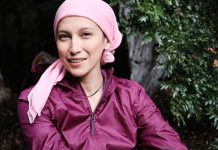
Breast cancer is a major health issue faced by women globally. As a preventive measure, many women, especially those in their middle and old age, are advised to undergo mammograms every one to two years.
Mammograms are essentially X-ray pictures of the breast that doctors use to check for early signs of breast cancer. But there’s more to these tests than just cancer detection.
What Mammograms Tell Us
When a doctor examines a mammogram, they don’t just look for signs of cancer. They also assess a woman’s breast density.
Comparing the latest mammogram with the previous ones, doctors keep an eye out for any changes that might be cause for concern. But it’s not always easy to spot these changes.
Unleashing the Potential of Mammograms
A study by researchers at Washington University School of Medicine in St. Louis has pointed out that previous mammograms could be a treasure trove of information that is currently underutilized.
These mammograms could help identify women who are at high risk of breast cancer and might even indicate which breast is more likely to be affected.
This is where the role of mathematical modeling comes into play.
Mathematical Models for Breast Density
In this study, the researchers employed a mathematical model to track changes in breast density over a decade in nearly 1,000 women.
The model revealed that the rate of change in breast density was significantly different between the nearly 300 women who were later diagnosed with cancer and those who were not.
These findings, published in JAMA Oncology, could help refine current risk algorithms and aid efforts to identify women who could benefit from additional screening.
The Value of Early Detection
Graham A. Colditz, MD, DrPH, associate director of Siteman Cancer Center at Barnes-Jewish Hospital and Washington University School of Medicine and the senior author of the study, emphasized the importance of early detection.
He stated, “By adding the change in density over repeated images to models for risk classification in each breast, we set the stage for a better risk estimation with each updated mammogram.
We can then better classify future risk and refer women to appropriate prevention strategies such as enhanced screening as part of routine breast health services.”
Risk Factors for Breast Cancer
Doctors estimate a woman’s risk of breast cancer based on several factors, including age, family history, presence of high-risk genetic variants, and breast density.
High-risk women are often recommended for supplemental screening, which typically means annual magnetic resonance imaging (MRI) scans in addition to annual mammograms.
The Mystery of Breast Density
The relationship between high breast density and an increased risk of breast cancer is well-known, but the reason for this link is not clearly understood.
Shu Jiang, Ph.D., the first author of the study, saw a potential solution in repeated mammograms.
She believed these could provide a wealth of data on how breast density changes over time in individual breasts, thereby shedding light on the connection between density and disease.
Studying Breast Density Over Time
Jiang analyzed data from women in the Joanne Knight Breast Health Cohort at Siteman Cancer Center.
This cohort, established by Colditz and his colleagues in 2008, is a diverse group of over 10,000 women, all of whom were cancer-free when they joined.
Jiang selected 289 women from the cohort who had developed cancer and compared them with 658 similar women who did not have cancer.
Each woman had received regular mammograms, enabling Jiang to collect and analyze a total of 8,710 single-breast images, representing an average of four time points over a 10-year period for each woman.
Decreasing Density and Cancer
Jiang discovered that although breast density usually decreases as women age, this decrease occurred at a significantly slower rate in breasts that later developed cancer compared to those that remained healthy.
“In the future, I think we can use a woman’s past history of density, plus her current density estimate, to better understand her risk level,” Jiang said.
Interestingly, she also found that the decrease in density was most sluggish in the breast which eventually developed cancer.
Mammograms: An Untapped Data Source
Jiang’s research highlights the untapped potential of mammogram data in predicting breast cancer risk.
The data regarding breast density change over time is already available, as many women regularly get mammograms. By using this data more effectively, we can improve breast cancer risk prediction and early detection.
The Road Ahead
Currently, Colditz, Jiang, and their colleagues are working on transforming these findings into practical applications that can enhance patient care.
They are developing prediction models that incorporate changes in breast density over time.
Their goal is to validate these models with independent data sets so they can be used in clinical care, leading to better breast cancer prevention and treatment strategies.
Final Thoughts
This research illustrates the importance of mammograms beyond just cancer detection.
By tracking changes in breast density over time, healthcare professionals can better understand a woman’s risk of breast cancer, potentially even identifying which breast may be more susceptible to the disease.
Further research and development are necessary, but the promise of more effective risk prediction and early detection methods is exciting.
These advancements could greatly enhance breast cancer prevention strategies, ultimately benefiting millions of women worldwide.
If you care about cancer, please read studies about a major cause of deadly breast cancer, and new cancer vaccines could prevent cancer recurrence.
For more information about cancer, please see recent studies about drug combo that may stop spread of cancer, and results showing vitamin D supplements strongly reduces cancer death.
The study was published in JAMA Oncology.
Copyright © 2023 Knowridge Science Report. All rights reserved.



